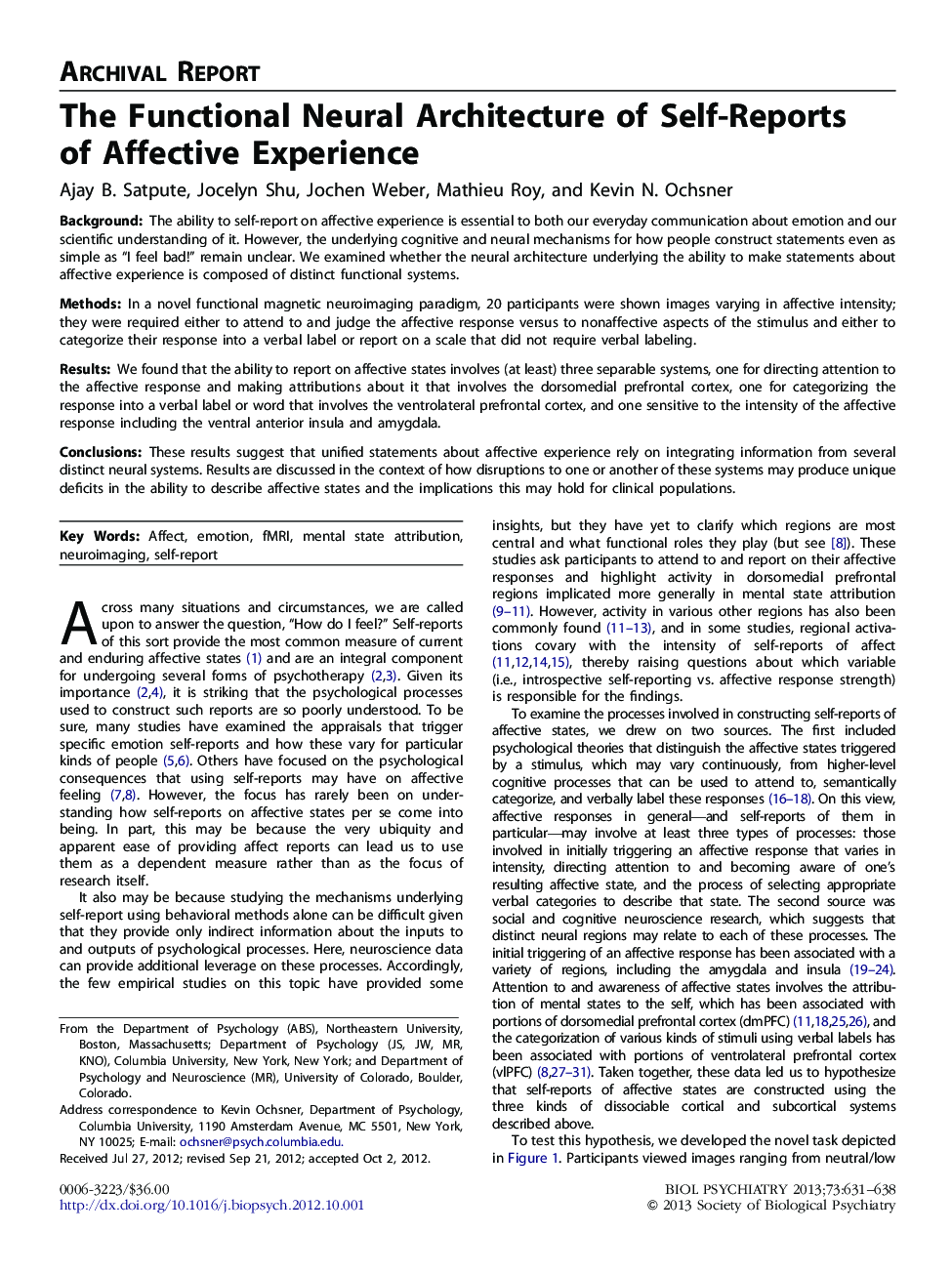| Article ID | Journal | Published Year | Pages | File Type |
|---|---|---|---|---|
| 4178009 | Biological Psychiatry | 2013 | 8 Pages |
BackgroundThe ability to self-report on affective experience is essential to both our everyday communication about emotion and our scientific understanding of it. However, the underlying cognitive and neural mechanisms for how people construct statements even as simple as “I feel bad!” remain unclear. We examined whether the neural architecture underlying the ability to make statements about affective experience is composed of distinct functional systems.MethodsIn a novel functional magnetic neuroimaging paradigm, 20 participants were shown images varying in affective intensity; they were required either to attend to and judge the affective response versus to nonaffective aspects of the stimulus and either to categorize their response into a verbal label or report on a scale that did not require verbal labeling.ResultsWe found that the ability to report on affective states involves (at least) three separable systems, one for directing attention to the affective response and making attributions about it that involves the dorsomedial prefrontal cortex, one for categorizing the response into a verbal label or word that involves the ventrolateral prefrontal cortex, and one sensitive to the intensity of the affective response including the ventral anterior insula and amygdala.ConclusionsThese results suggest that unified statements about affective experience rely on integrating information from several distinct neural systems. Results are discussed in the context of how disruptions to one or another of these systems may produce unique deficits in the ability to describe affective states and the implications this may hold for clinical populations.
